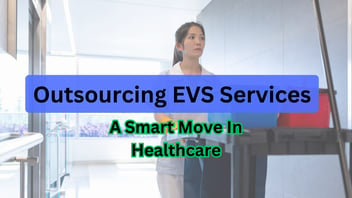
Establishing a sterile and safe environment in healthcare institutions is essential for minimizing Healthcare-Acquired Infections (HAIs) and safeguarding the well-being of both patients and staff. Key measures include maintaining facility hygiene through effective cleaning techniques, disinfection protocols, and proper use of equipment. Our approach focuses on innovative methods and best practices that are continuously evolving and setting new standards for environmental (EVS) services.
Defined Processes for Service Excellence
Our foundation is built on clearly defined processes that keep our organization aligned, minimize errors, enhance service delivery, and improve the speed and quality of our staff's work. This commitment enables us to provide consistent and measurable service quality, maintain a reliable workforce, and drive organizational growth.
Best Practices and Innovative Methods
Effective Cleaning Techniques
Healthcare Institutions require rigorous and meticulously cleaning methods that prioritize high-touch surfaces and frequently handled items, such as, doorknobs, bedrails, and medical equipment. Such surfaces are prone to harboring harmful pathogens and bacteria, making them critical points for potential transmission of infections.
Advanced Disinfection Protocols
Choosing the right antimicrobial cleaning products is crucial in the fight against infection. The use of Health Canada approved disinfectants ensure that cleaning methods are successful.
Robust Quality Control Process
Monitoring our cleaning methods is paramount for upholding the highest hygiene standards. Incorporating visual inspections, performance observations, satisfaction surveys and ATP testing to ensure cleanliness and safety.
Continuous Training and Education
Empowering our EVS team through ongoing trainings and leadership is critical to maintaining high hygiene standards. An educated team improves the overall effectiveness of the infection control strategies implemented for our customers.
We stay updated on latest trends by associating with leading organizations that educate us about infection prevention and about the healthcare industry.
Equipment and Tools
The effectiveness of cleaning methods is greatly reliant on the equipment employed. Investing in high-quality equipment and tools, such as, HEPA vacuums, microfiber cloths and mops, and steam cleaners, can significantly improve cleaning methods' effectiveness.
Personal Protective Equipment (PPE)
Our EVS team's safety cannot be compromised. The proper use of PPE, such as gowns, masks, and gloves is critical for safeguarding our employees from infections.
Preventing Cross-Contamination With Enhanced Strategies to Mitigate Risk
Cross-contamination in healthcare environments poses a significant threat to both patients and medical staff, potentially resulting in the transmission of Healthcare-Acquired Infections (HAIs). To reduce this risk, implementing strategic measures is crucial for preserving a safe and sterile environment.
Outlined below are some of the implemented strategies to effectively eliminate cross-contamination, ensuring a safer healthcare environment.
Color-Coded Cleaning Systems
Color-coded cleaning systems are one of the most effective ways to avoid cross-contamination. This method involves allocating different colors to cleaning equipment and materials based on where they are utilized. For example, red cloths and mops may be used only in high-risk areas such as isolation rooms, whereas blue may be reserved for general patient spaces. This strategy not only reduces the possibility of infections spreading between different locations, but it also helps to organize the cleaning process, making it more efficient and less prone to error.
Utilization of Single-Use Disposables
Another important tactic is the usage of single-use disposables like wipes and mops. These devices are intended to be used once and then discarded, greatly minimizing the possibility of transferring illnesses from one location to another. Single-use disposables are especially useful in locations where pathogen concentrations are high or there is a higher danger of contamination. Healthcare institutions can further protect against infection spread by ensuring that these products are widely available and used properly by all staff.
Continuous Monitoring and Feedback
To ensure the efficacy of these measures, continuous monitoring and feedback mechanisms should be implemented. This could include regular audits of cleaning techniques, feedback from on-site staff, and protocol changes based on the most recent research and guidelines. Healthcare institutions may adjust and improve their procedures by constantly analyzing the success of cross-contamination prevention measures, maintaining the highest levels of hygiene and safety.
Blog
Insightful content on environmental (EVS) services, latest industry trends, and innovations.


Everything You Should Know About EVS Technicians:...
Discover how EVS technicians are unsung heroes in the battle against infections in healthcare...

EVS cleaners vs Commercial Cleaners for...
Choosing the right cleaning service for healthcare facilities is crucial for patient safety and...
